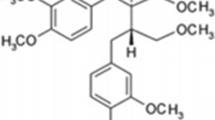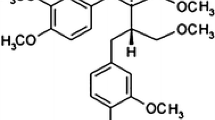Abstract
The aim of the present study was to investigate the protective effects of Ganoderma lucidum polysaccharide (GLPS) against carbon tetrachloride (CCl4)-induced hepatotoxicity in vitro in common carp. Precision-cut liver slices (PCLSs), which closely resemble the organ from which they are derived, were employed as an in vitro model system. GLPS (0.1, 0.3, and 0.6 mg/ml) was added to PCLS culture system before the exposure to 12 mM CCl4. The supernatants and slices were collected to detect molecular and biochemical responses to CCl4 and PCLS treatments. The levels of CYP1A, CYP3A, and CYP2E1 were measured by ELISA; the mRNA expressions of TNF-α, IL-1β, IL-6, and iNOS were determined by RT-PCR; and the relative protein expressions of c-Rel and p65 were analyzed by western blotting. Results showed that GLPS inhibited the elevations of the marker enzymes (GOT, GPT, LDH) and MDA induced by CCl4; it also enhanced the suppressed activity of antioxidant enzymes (SOD, CAT, GSH-Px, T-AOC). The treatment with GLPS resulted in significant downregulation of NF-κB and inflammatory cytokine mRNA levels and significant decreases in the hepatic protein levels of CYP1A, CYP3A, and CYP2E1. These results suggest that GLPS can protect CCl4-induced PCLS injury through inhibiting lipid peroxidation, elevating antioxidant enzyme activity, and suppressing immune inflammatory response.







Similar content being viewed by others
Abbreviations
- GLPS:
-
Ganoderma lucidum polysaccharide
- PCLS:
-
Precision-cut liver slice
- LDH:
-
Lactate dehydrogenase
- GPT:
-
Glutamate pyruvate transaminase
- GOT:
-
Glutamate oxalate transaminase
- SOD:
-
Superoxide dismutase;
- GSH-Px:
-
Glutathione peroxidase
- CAT:
-
Catalase
- T-AOC:
-
Total antioxidant capacity
- MDA:
-
Malondialdehyde
References
Balunas MJ, Kinghorn AD (2005) Drug discovery from medicinal plants. Life Sci 78(5):431–441
Basu S (2011) Carbon tetrachloride-induced hepatotoxicity: a classic model of lipid peroxidation and oxidative stress. In: Basu S, Wiklund L (eds) Studies on experimental models. Humana Press, Totowa, pp 467–480
Bhakar AL, Tannis L-L, Zeindler C, Russo MP, Jobin C, Park DS, MacPherson S, Barker PA (2002) Constitutive nuclear factor-κB activity is required for central neuron survival. J Neurosci 22(19):8466–8475
Boess F, Kamber M, Romer S, Gasser R, Muller D, Albertini S, Suter L (2003) Gene expression in two hepatic cell lines, cultured primary hepatocytes, and liver slices compared to the in vivo liver gene expression in rats: possible implications for toxicogenomics use of in vitro systems. Toxicol Sci 73(2):386–402
Braunbeck T, Storch V, Bresch H (1990) Species-specific reaction of liver ultrastructure in zebrafish (Brachydanio rerio) and trout (Salmo gairdneri) after prolonged exposure to 4-chloroaniline. Arch Environ Contam Toxicol 19(3):405–418
Brown SJ, Desmond PV (2002) Hepatotoxicity of antimicrobial agents. Semin Liver Dis 22:157–168
Chen X, Chen Y, Li S, Chen Y, Lan J, Liu L (2009) Free radical scavenging of Ganoderma lucidum polysaccharides and its effect on antioxidant enzymes and immunity activities in cervical carcinoma rats. Carbohydr Polym 77(2):389–393
Dong D, Zhang S, Yin L, Tang X, Xu Y, Han X, Qi Y, Peng J (2013) Protective effects of the total saponins from Rosa laevigata Michx fruit against carbon tetrachloride-induced acute liver injury in mice. Food Chem Toxicol 62:120–130. doi:10.1016/j.fct.2013.08.050
Dubois M, Gilles KA, Hamilton JK, Rebers P, Smith F (1956) Colorimetric method for determination of sugars and related substances. Anal Chem 28(3):350–356
Elferink M, Olinga P, Draaisma A, Merema M, Bauerschmidt S, Polman J, Schoonen W, Groothuis G (2008) Microarray analysis in rat liver slices correctly predicts in vivo hepatotoxicity. Toxicol Appl Pharmacol 229(3):300–309
Farkas D, Tannenbaum SR (2005) In vitro methods to study chemically-induced hepatotoxicity: a literature review. Curr Drug Metab 6(2):111–125
Ikatsu H, Shinoda S, Nakajima T (1998) CYP2E1 level in rat liver injured by the interaction between carbon tetrachloride and chloroform. J Occup Health 40:223–229
Jia R, Cao L-P, Du J-L, Wang J-H, Liu Y-J, Jeney G, Xu P, Yin G-J (2014) Effects of carbon tetrachloride on oxidative stress, inflammatory response and hepatocyte apoptosis in common carp (Cyprinus carpio). Aquat Toxicol 152:11–19
Jiang W, Gao M, Sun S, Bi A, Xin Y, Han X, Wang L, Yin Z, Luo L (2012) Protective effect of L-theanine on carbon tetrachloride-induced acute liver injury in mice. Biochem Biophys Res Commun 422(2):344–350. doi:10.1016/j.bbrc.2012.05.022
Klassen LW, Thiele GM, Duryee MJ, Schaffert CS, DeVeney AL, Hunter CD, Olinga P, Tuma DJ (2008) An in vitro method of alcoholic liver injury using precision-cut liver slices from rats. Biochem Pharmacol 76(3):426–436
Lemaire B, Beck M, Jaspart M, Debier C, Calderon PB, Thomé J-P, Rees J-F (2011) Precision-cut liver slices of Salmo salar as a tool to investigate the oxidative impact of CYP1A-mediated PCB 126 and 3-methylcholanthrene metabolism. Toxicol in Vitro 25(1):335–342
Li H, Wang G, Liu S, An Q, Zheng Q, Li B, Li Z (2014) Comparative changes in the antioxidant system in the flag leaf of early and normally senescing near-isogenic lines of wheat (Triticum aestivum L.). Plant cell reports 1–12
Liu Q, Tan Q, Chen X, Du Y, Xia J, Yang Q, Ma Y (2009) Changes of biochemical characteristics and organization structure in liver of grass carp (Ctenopharyngodon idellus) with hepatobiliary syndrome. Joumal of Anhui Agricultual Sciences 37:6463–6467
Lin S, Zhu K, Song D, Shaoping N, Mingyong X (2013) Protective Effect of Polysaccharide from Ganoderma atrum against Oxidative Stress-induced Liver Injury in Type II Diabetic Rats. Food Science 34, 300–304
Livak KJ, Schmittgen TD (2001) Analysis of relative gene expression data using real-time quantitative PCR and the 2−ΔΔCT method. Methods 25(4):402–408
Moron MS, Depierre JW, Mannervik B (1979) Levels of glutathione, glutathione reductase and glutathione S-transferase activities in rat lung and liver. Biochim Biophys Acta 582(1):67–78
Parrish AR, Gandolfi AJ, Brendel K (1995) Precision-cut tissue slices: applications in pharmacology and toxicology. Life Sci 57(21):1887–1901
Reyes-Gordillo K, Segovia J, Shibayama M, Vergara P, Moreno MG, Muriel P (2007) Curcumin protects against acute liver damage in the rat by inhibiting NF-κB, proinflammatory cytokines production and oxidative stress. Biochimica et Biophysica Acta (BBA)-General Subjects 1770(6):989–996
Robbins M, Zhao W (2004) Chronic oxidative stress and radiation-induced late normal tissue injury: a review. Int J Radiat Biol 80(4):251–259
Rudd PM, Elliott T, Cresswell P, Wilson IA, Dwek RA (2001) Glycosylation and the immune system. Science 291(5512):2370–2376
Schaffert CS, Duryee MJ, Bennett RG, DeVeney AL, Tuma DJ, Olinga P, Easterling KC, Thiele GM, Klassen LW (2010) Exposure of precision-cut rat liver slices to ethanol accelerates fibrogenesis. American Journal of Physiology Gastrointestinal and Liver Physiology 299(3):G661–G668
Shanmugasundaram P, Venkataraman S (2006) Hepatoprotective and antioxidant effects of Hygrophila auriculata (K. Schum) Heine Acanthaceae root extract. J Ethnopharmacol 104(1):124–128
Shilling A, Williams D (2000) Determining relative estrogenicity by quantifying vitellogenin induction in rainbow trout liver slices. Toxicol Appl Pharmacol 164(3):330–335
Smith P, Krack G, McKee R, Johnson D, Gandolfi A, Hruby V, Krumdieck C, Brendel K (1986) Maintenance of adult rat liver slices in dynamic organ culture. In vitro Cellular & Developmental Biology 22(12):706–712
Sun R, Liu D, Chen J, Liu Z, Liu F, Li X, Pu X (2005) Extraction of Astragalus polysaccharides in Astragalus. Acta Scientiarun Naturaltium Universitatis Nankaiensis 38:33–36
Thiim M, Friedman LS (2003) Hepatotoxicity of antibiotics and antifungals. Clinics in liver disease 7(2):381
Visen P, Saraswat B, Dhawan B (1998) Curative effect of picroliv on primary cultured rat hepatocytes against different hepatotoxins: an in vitro study. J Pharmacol Toxicol Methods 40(3):173–179
Webb D, Gagnon MM, Rose T (2008) Hepatic metabolism of contaminants in the terapontid fish, yellowtail trumpeter (Amniataba caudavittata Richardson). Environ Toxicol 23(1):68–76
Weber L, Boll M, Stampfl A (2003) Hepatotoxicity and mechanism of action of haloalkanes: carbon tetrachloride as a toxicological model. Crit Rev Toxicol 33(2):105–136
Wu X, Bai D, Yang G, Ning B, Zhang X, Sun L (2011) Effects of ganoderma lucidum polysaccharides on the activation of immunological cells of the yellow catfish (Pelteobagrus fulvidraco). Acta Agriculturae Boreali-Sinica 26:195–198
Xie Y, Hao H, Wang H, Guo C, Kang A, Wang G (2014) Reversing effects of lignans on CCl4-induced hepatic CYP450 down regulation by attenuating oxidative stress. J Ethnopharmacol 155(1):213–221. doi:10.1016/j.jep.2014.05.016
Yang J, Li Y, Wang F, Wu C (2010) Hepatoprotective effects of apple polyphenols on CCl4-induced acute liver damage in mice. J Agric Food Chem 58(10):6525–6531
Yeh C-H, Chen H-C, Yang J-J, Chuang W-I, Sheu F (2010) Polysaccharides PS-G and protein LZ-8 from Reishi (Ganoderma lucidum) exhibit diverse functions in regulating murine macrophages and T lymphocytes. J Agric Food Chem 58(15):8535–8544
Yin G, Cao L, Xu P, Jeney G, Nakao M, Lu C (2011) Hepatoprotective and antioxidant effects of Glycyrrhiza glabra extract against carbon tetrachloride (CCl4)-induced hepatocyte damage in common carp (Cyprinus carpio). Fish Physiol Biochem 37(1):209–216
Zhao Z, Park SM, Guan L, Wu Y, Lee JR, Kim SC, Kim YW, Zhao R (2015) Isoliquiritigenin attenuates oxidative hepatic damage induced by carbon tetrachloride with or without buthionine sulfoximine. Chem Biol Interact 225:13–20. doi:10.1016/j.cbi.2014.10.030
Zhonghui Z, Xiaowei Z, Fang F (2014) Ganoderma lucidum polysaccharides supplementation attenuates exercise-induced oxidative stress in skeletal muscle of mice. Saudi Journal of Biological Sciences 21(2):119–123
Acknowledgements
This study was funded by Special Scientific Research Funds for Central Non-profit Institutes, Chinese Academy of Fishery Sciences (2016GH05, 2012A08YQ01) and National Natural Science Foundation of China (31202002, 31200918).
Author information
Authors and Affiliations
Corresponding authors
Ethics declarations
Conflict of interest
The authors declare that they have no conflict of interest.
Additional information
Yingjuan Liu and Chunyun Zhang contributed equally to this study.
Rights and permissions
About this article
Cite this article
Liu, Y., Zhang, C., Du, J. et al. Protective effect of Ganoderma lucidum polysaccharide against carbon tetrachloride-induced hepatic damage in precision-cut carp liver slices. Fish Physiol Biochem 43, 1209–1221 (2017). https://doi.org/10.1007/s10695-016-0333-0
Received:
Accepted:
Published:
Issue Date:
DOI: https://doi.org/10.1007/s10695-016-0333-0




